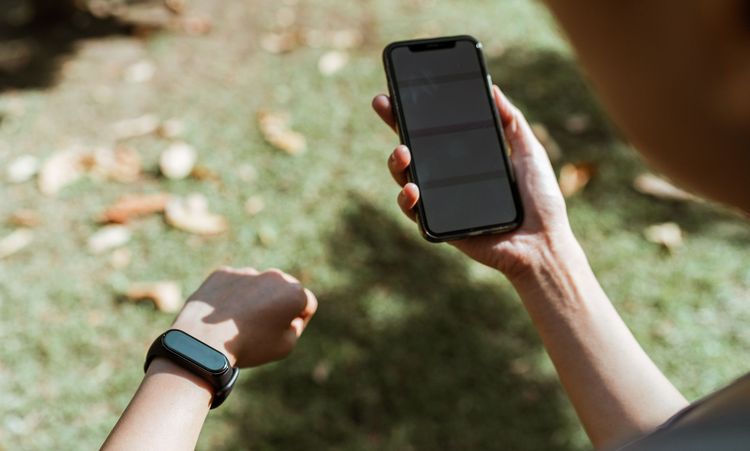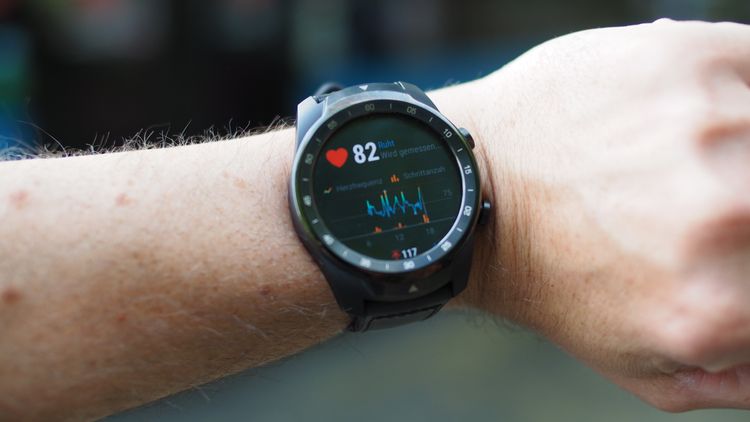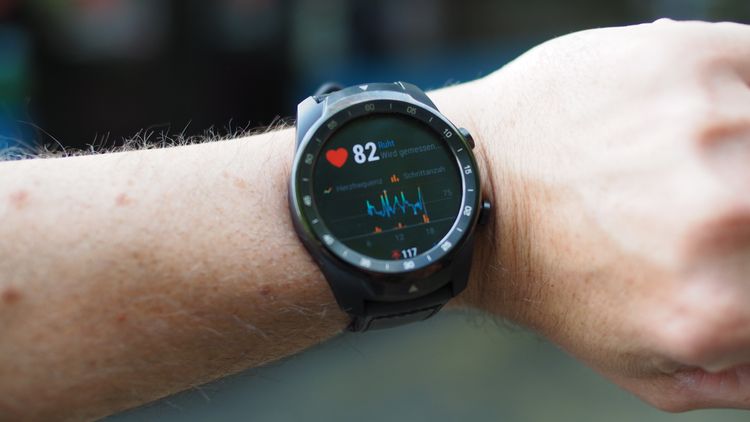PT Crab 🦀 Issue 166 - Best of Chest, Breast, and the Rest

This week, it’s another article looking back at where we’ve been and pulling in the best of them. We’re specifically looking into your trunk area, that’s your chests, your breasts, and all the rests that we find there. First, we’ll look at Pec Minor, bring back some of our best content about Cancer, then look briefly into cardiopulmonary PT.
Before we dive into these three articles, here’s one more exhortation to fill out this quick survey. Just 5 questions. Thanks to all who already have. It’s so helpful. Do it here.
Also this week, PT Crab is brought to you by Ned & Co. More details in the post.

Can You Measure Pec Minor Length? It Seems So.
The Gist - This remarkably interesting study from PTJ digs into a new method to measure pec minor length. Why would you want to do that? Breast cancer. As it turns out, “decreased pec minor length is common after primary breast cancer treatment and can result in an abnormal position of the scapula.” You’ll know all the problems associated with that. The researchers dug into their toolbox to invent a new, cheap method of measuring pec minor length, since the old one need an MRI machine that most people don’t have laying around (and if you do, can I have it?).
They used something called a PALpation meter. It costs a couple hundred dollars and is apparently quite easy to use. It’s a combo of inclinometer and caliper designed to measure bodily distances. With it in hand, they checked the pec minor length of 29 women with previous breast cancer, measuring from origin to insertion. Since there’s no gold standard to compare with, they checked it against a motion capture system and the results were great! Intratester reliability was excellent, intertester was too, and the R value between PALM and motion capture was .87. So yay!
Why not use a tape measure? Breast areas are hard to measure, especially on women. This method let them measure a direct line without having to deal with bodily topography.
Tell Me More - Since we covered the why and how above, let’s talk a bit more about the stats here. According to the authors, this is the first study that uses inexpensive equipment get interrater reliability and validity for this measurement. On those stats, the researchers split out affected and unaffected sides, so I will too. On the affected side, standard error of measure was just 0.22cm, while is was 0.31cm on the affected side. Their mathematics after the fact showed that the minimum detectable change (MDC95) was 0.80cm. Overall, the measures tracked quite well with the motion capture system, making this an apparently good way to check pec minor length. If you’re interested in the whole thing, the study is short and quite detailed with more stats and info. Since it’s the PTJ, there’s no Open Access, but I did request a full-text through ResearchGate (that’s not back yet) and an APTA account will get you access to all of PTJ. Link below as usual.
Paper please. Here it is.
Discover How Magnesium Can Unlock Better Sleep and Recovery
Experience better sleep, recovery, and 300+ more health benefits with Ned’s bestselling Magnesium Superblend. Mello is a 3-in-1 Magnesium Superblend containing the 3 most bioavailable forms of magnesium on Earth along with stress-busting amino acids, GABA and L-Theanine, plus over 70 trace minerals for added health & hydration! Mello is backed by experts like Dr. Gabrielle Lyon and over 1,200 verified 5-star reviews. PT Crab subscribers save 20% on their first purchase with code: PTCRAB. Learn more here.

But what about Cancer safety?
The Gist - This focused review of safety considerations in cancer rehab was authored in part by Dr. Nicole Stout who is a dynamo in this field. If you’re going to follow the research of one person about cancer rehab, I’d say she’s the one.
This article is much more complex than the previous, though shorter, which is nice. Let’s look into some common concerns that come up with almost everyone who has had cancer at first, then we’ll look into some more specifics below.
- Post-surgical precautions and contraindications are common in cancer rehab and it’s important for clinicians to be aware of what’s going on, while balancing those concerns with the importance of post-operative mobility.
- Chemotherapeutic interventions come with a big mix of side effects, much too big to get into here, but there’s a fantastic table of them organized by both category and name, along with side effects. I’ll put a picture below to show how nice this table is. If I worked in cancer rehab, I’d have this printed out or saved on my desktop.
- Anemia “is a frequent complication of cancer and cancer treatment including chemotherapy and radiation” and it reduces exercise tolerance and endurance. They recommend that caution be used “ in prescribing progressive resistive and moderate to high intensity aerobic exercise in individuals with severe anemia (hemoglobin ≤8 g/dL). And that you monitor hemodynamic, functional, and exertion status
- Thrombocytopenia is something to watch out for too. “Individuals with platelet counts below 10,000 k cells/uL are at significant risk for spontaneous hemorrhage” while people with 20,000 or less are restricted to walking and ADLs. You need more than 30,000 k cell/uL to be safe for moderate exercise.
All of the above is specifically important in folks undergoing bone marrow transplantation. Exercise helps these folks recover and shortens the duration of anemia, neutropenia, thrombocytopenia, and hospitalization length, but it’s gotta be done safely.
Tell Me More - This is a big paper. The next sections concern cardiopulmonary toxicity, neurotoxicity, lymphedema, frailty, osseous fragility, cachexia, and more. We’re obviously not going to get into all of that. I’m going to pull out some highlights, then get into specific safety considerations about exercise.
Some notes:
- “One of the most commonly used chemotherapy drug classes, anthracyclines, may have significant and irreversible impact on cardiac function, primarily resulting in reduce left ventricular function. Over time, this reduces overall ejection fraction and compromises long term cardiac function.”
- Chest wall radiation can adversely impact both cardiac and pulmonary function. This type of radiation is common with breast, lung, and Hodgkin’s cancer treatments and can result in diastolic dysfunction and blood flow abnormalities.
- Platinum-based chemotherapeutic agents can have a “persistent impact on sensation and proprioception are notable and are shown to have a negative impact on balance, gait, and mobility even > 5 years after the completion of treatment.” Because of this, “fall risk is two to three times greater in the population of individuals with a history of receiving neurotoxic chemotherapeutic agents.”
- Exercise does not exacerbate lymphedema or have significant impact on worsening symptoms. Additionally, “there is no strong evidence basis for the use of compression garments during exercise for prophylactic purposes, however early use of compression therapy in the presence of early, sub-clinical lymphedema is safe and effective.” And watch for cellulitis.
- If cachexia and sarcopenia aren’t treated properly, exercise can actually make them worse, since they need appropriate protein and energy balance.
There’s a lot more, but let’s look into exercise specifically. If you’re interested in modalities, Table 5 in the paper breaks down contraindications in cancer survivors. But notes about exercise for the most common cancers, breast and prostate, are below:
“Exercise training and maximal and sub-maximal exercise testing in persons with breast cancer is relatively safe. However, because 35–58% of breast cancer survivors report persistent shoulder and arm pain, it is important to minimize the risk of musculoskeletal injuries which may result from surgical intervention or hormonal therapies.”
“Greater than 50% of individuals undergoing prostate cancer treatment will receive androgen deprivation therapy (ADT) to alter hormonal impact on tumor growth. ADT is associated with muscle mass depletion and bone density loss which directly impact safety with rehabilitation interventions. Aerobic and resistive exercise interventions mitigate the impact of ADT and promote restoration of muscle mass and mitigate bone density loss.”
Exercise also appears to be safe in people experience leukemia, though watch out for blood associated stuff from above.
Overall, the paper is specific to point out that physical therapy rehabilitation is generally safe in oncology patients as long as we keep safety considerations in mind.
Check out the paper for more details.
Paper?Ye ye ye.
How to Take BP Correctly
The Gist - This excellent piece from the Journal of Cardiopulmonary PT is a detailed assessment of how to properly take PT. According to them, “Hypertension is the most common primary diagnosis in the United States. It is a major risk factor for coronary heart disease, stroke, and renal failure, and affects 29% of the adult US population. Twenty-two percent of persons who have hypertension are unaware that they have it.” And PTs see people so often that we’re in a great place to help monitor this. But inaccurate measures of BP aren’t helpful, especially since the paper points out that many people are borderline: “almost two-thirds of hypertensive individuals would be denied morbidity preventing treatment if the diastolic blood pressure were underestimated by 5 mm Hg; the number of persons diagnosed with hypertension would more than double if systolic pressure were over estimated by 5 mm Hg.“
So how do we do it well? Buckle up.
The blood pressure cuff should be placed on the patient’s bare arm. If necessary, clothing should be removed, and the patient/client draped, to adequately expose the arm. The sleeve should not simply be rolled up in order to gain access to the arm; it creates a tourniquet effect above the cuff. When placing the cuff on the arm, the midline of the inflatable bladder should be positioned over the brachial artery…at the mid-point of the upper arm. The lower-most edge of the cuff should be at least 1 inch (2.5 cm) above the antecubital crease so that the bell (preferred) or the diaphragm of the stethoscope can be placed over the point of the strongest palpable brachial artery pulse in the antecubital fossa without encroaching beneath the cuff….
Because of the effects of hydrostatic pressure, the position of the arm when the blood pressure is measured can also have a major impact on the pressure observed. The magnitude of this effect is 1 to 2 mm Hg for every 2.5 cm above or below the level of the heart… since muscle contraction raises blood pressure, care should also be taken to avoid the patient/client helping to elevate the limb; if available, pillows or bolsters may also be used to properly position and support the arm.
In order to avoid over inflation of the cuff, and to accommodate any systolic auscultatory gap, the clinician should estimate a maximum inflation point by palpating the radial pulse while incrementally inflating the cuff until the pulse disappears. The therapist should then wait at least one minute after deflating the cuff before reinflating the cuff to 30 mm Hg above the point where the pulse previously disappeared.
Tell Me More - They have a few more things to watch out for. I think we all know that crossing legs increases BP by about 5mmHg, so uncross those things. And forearm BPs are unvalidated and can differ up to 20mmHg from upper arm, so watch out for those too.
They also recommend that standing BP be performed in the elderly after performing seated to watch out for postural hypotension. That’s a systolic BP drop by more than 20mmHg or diastolic by more than 10mmHg.
Lastly, picking the correct size of cuff is key. Too small leads to overmeasuring, and too big is better but causes errors in both directions. Also, those automatic cuffs aren’t actually very accurate and quite suspect, according to the paper, so do it by hand and do it quick, ideally twice to verify.
Paper? Got it here. And it’s open access.
Why you don’t take vitals.
The Gist - We should take vitals. Outpatient is a should (@PTReviewer would argue a must), inpatient is a must. But we don’t. According to this paper, a pilot study of the utilization of vital signs during PT eval after total joint replacement, we just don’t. The study was a mix of chart review and interviews in the inpatient setting that showed how PTs believe in the importance of vitals but then don’t take them due to a variety of problems. From their review of 50 patient charts, a total of 134 PT visits including 50 evals and 84 followups, PTs took vitals 46% of the time on eval and 6 times on followup. Yikes. That’s a total of 29 times in 134 visits. This was amongst 14 PTs or PTAs of which they interviewed three to learn more about why. I just finished an inpatient rotation and I will freely admit, I was about 60% on vitals. It wasn’t great. And I was thinking about it, but it’s just easy to forget honestly.
Details of the full why are below, but here are the thematic highlights.
Theme 1: Vital taking is based on patient related factors, not always required. Observe first, then check.
Theme 2: Vitals aren’t necessary if we have notes about previous interventions or from nursing. Check chart first, then check.
Theme 3: I can’t find the equipment.
In a hospital. Yikes.
Theme 4: I do it more now than I used to at least.
Theme 5: For people with chronic issues, I always check.
Tell Me More - To back up those themes, let’s hear what the PTs have to say, specifically.
About observing first, then checking vitals: “If they had an incident with a patient passed out in the bathroom because of hypotension or a near miss like that, then I’d be checking it.” Another PT expressed a similar idea, saying that if the patient reports dizziness, are sweating, or appear uncomfortable, they’ll go grab the machine.
Focusing on theme 2 was similar to theme 1 and you can check the full paper for details on that.
Theme 3, the most concerning but probably the easiest to fix, points out significant barriers PTs can face.
I’m trying to find a machine, and I know that’s not a good excuse, however, in the hospital, it’s sometimes very hard to find the appropriate machine. The biggest barrier is equipment availability.
We’ll forego the other two themes for now as well, with the paper available if you want to follow up. Let’s pop on to the discussion section for more details. The researchers highlight that 20% vital taking is about standard according to other research and that interpretation of vitals is even more important than just taking them. “This, however, assumes that the data are being collected to allow for interpretation,” they go on to say. Pointing out that we can’t interpret what we don’t know. And also that we can’t interpret what we take incorrectly (see below for more on that).
This is a good, readable paper and I’d recommend checking it out if you want to charge yourself up to always take vitals or convince others of equipment-based changes needed in your hospital. To finish on the positive side, all the PTs they talked to actively wanted to take vitals more often but environmental barriers or real world problems just got in the way.
Paper? Sure thing, enjoy!
That's our week! If you enjoyed this content, you'd probably also like our issue on Cancer rehab, number 137, or one on cardiopulmonary, issue 116. Either way, have a good one!





Comments
Want to leave a comment and discuss this with your fellow PTs? Join PT Crab and get summarized PT research in your inbox, every week.